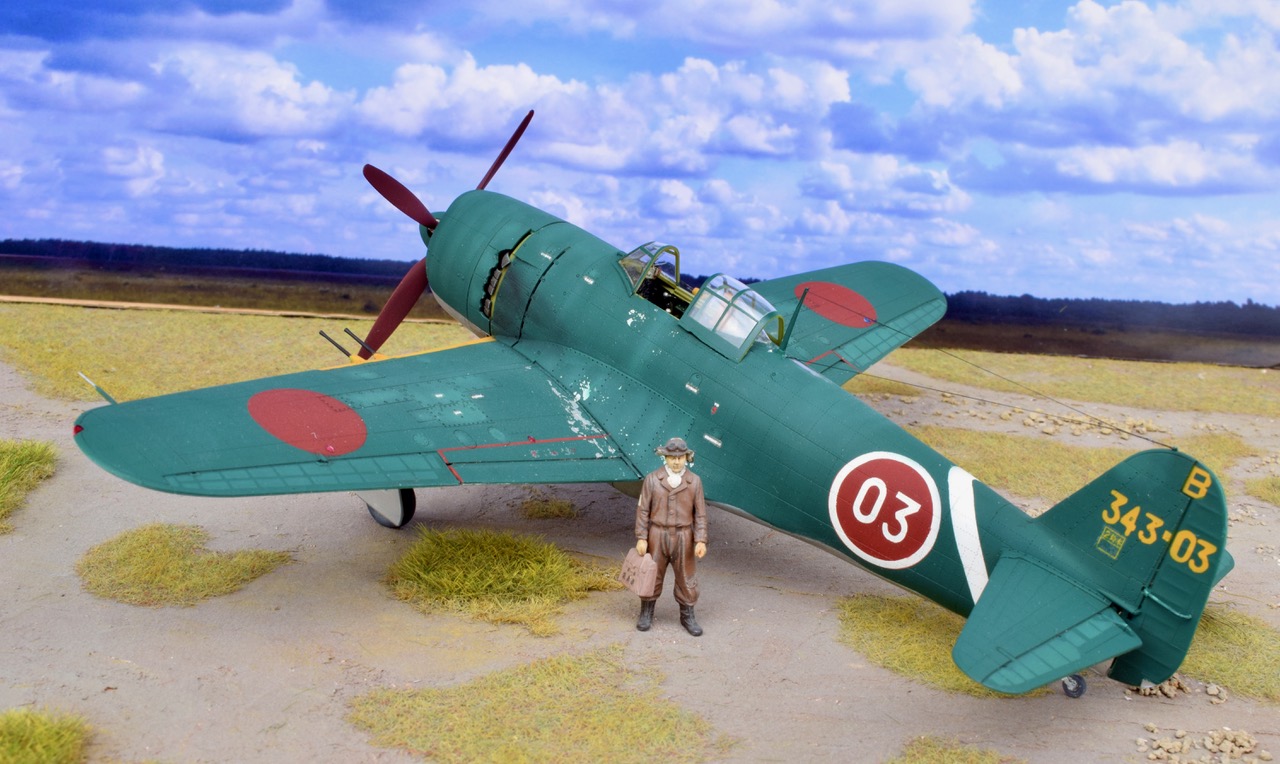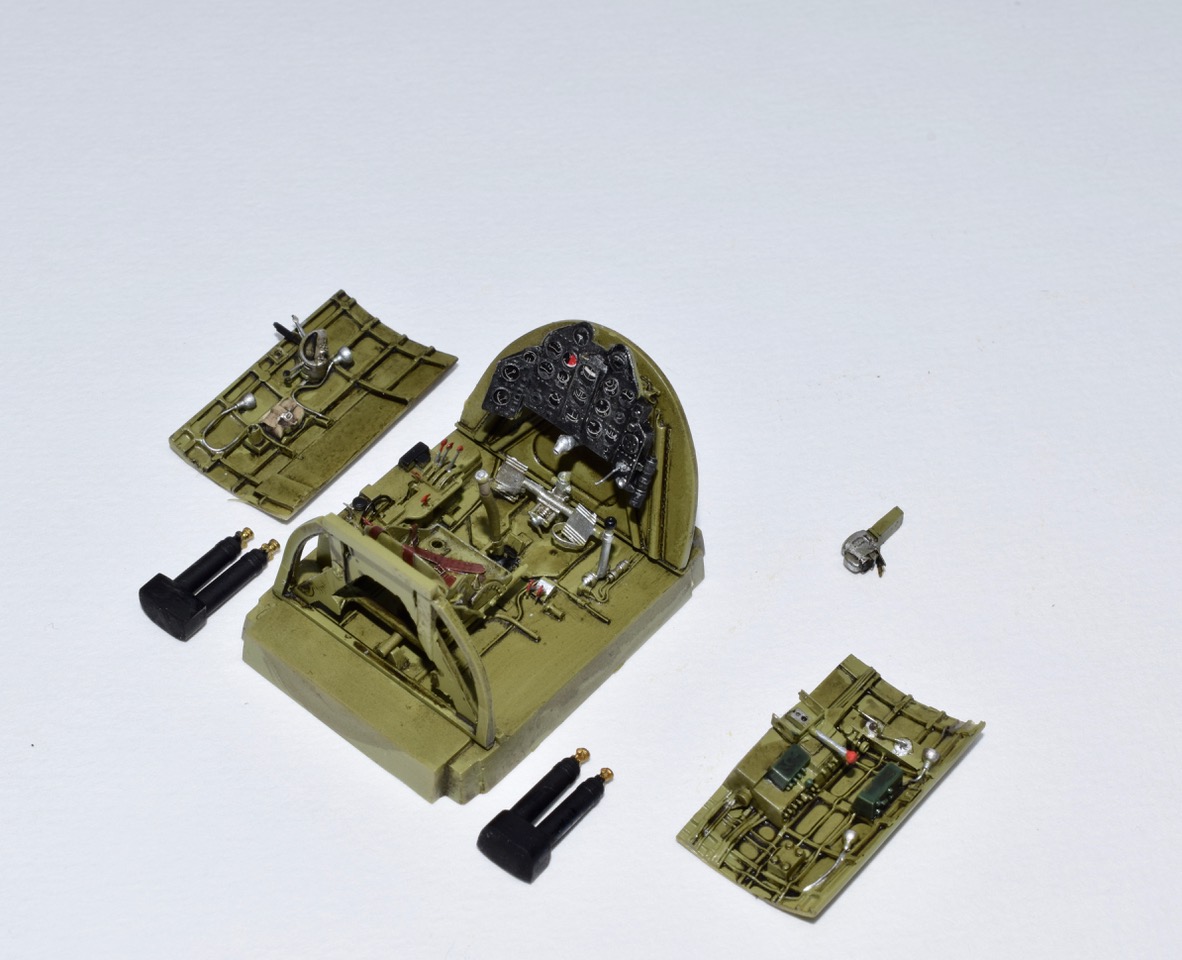C’est un fait assez rare pour être noté, le N1K2-J, dernier et meilleur chasseur de la Marine Japonaise, descend d’un Hydravion alors que, d’habitude, c’est le processus inverse qui prévaut. Le Kyofu « Rex » est donc l’ascendant direct qui donna naissance au N1K1 « Shiden » lequel fut handicapé par son train compliqué et par son moteur erratique car poussé à la production avec une main d’oeuvre peu qualifiée. Les ingénieurs de Kawanishi trouvèrent la solution en abaissant les ailes, permettant ainsi l’installation d’un train classique et plus fiable. La plupart des « Georges » furent versés au 343 Ku commandé par Minoru Genda et regroupant peu ou prou ce qui restait des pilotes chevronnés de la Marine. Rapide, manoeuvrant et bien armé, le Georges donna des sueurs froides aux pilotes d’Hellcat et de Corsair qui attaquaient le Japon. C’est un modèle de première série que j’ai représenté, gouvernail large, qui sera réduit à partir du 100ème exemplaire. L’avion est celui de Koji Ohara en Mars 45 à Matsuyama.
Topo, photos et montage : Mr Jean BARBY
This is a rather rare fact to be noted, the N1K2-J, the last and best fighter of the Japanese Navy, descends from a seaplane whereas, usually, it is the reverse process that prevails. The Kyofu «Rex» is therefore the direct ascendant that gave birth to the N1K1 «Shiden» which was handicapped by its complicated train and its erratic engine because pushed to production with a low-skilled workforce. Kawanishi engineers found the solution by lowering the wings, allowing the installation of a conventional and more reliable train. Most of the «Georges» were paid to the 343 Ku commanded by Minoru Genda and grouping more or less what remained of the experienced pilots of the Navy. Quick, maneuvering and well armed, the Georges gave cold sweats to the pilots of Hellcat and Corsair who attacked Japan. It is a model of first series that I represented, wide rudder, which will be reduced from the 100th copy. The plane is that of Koji Ohara in March 45 in Matsuyama










